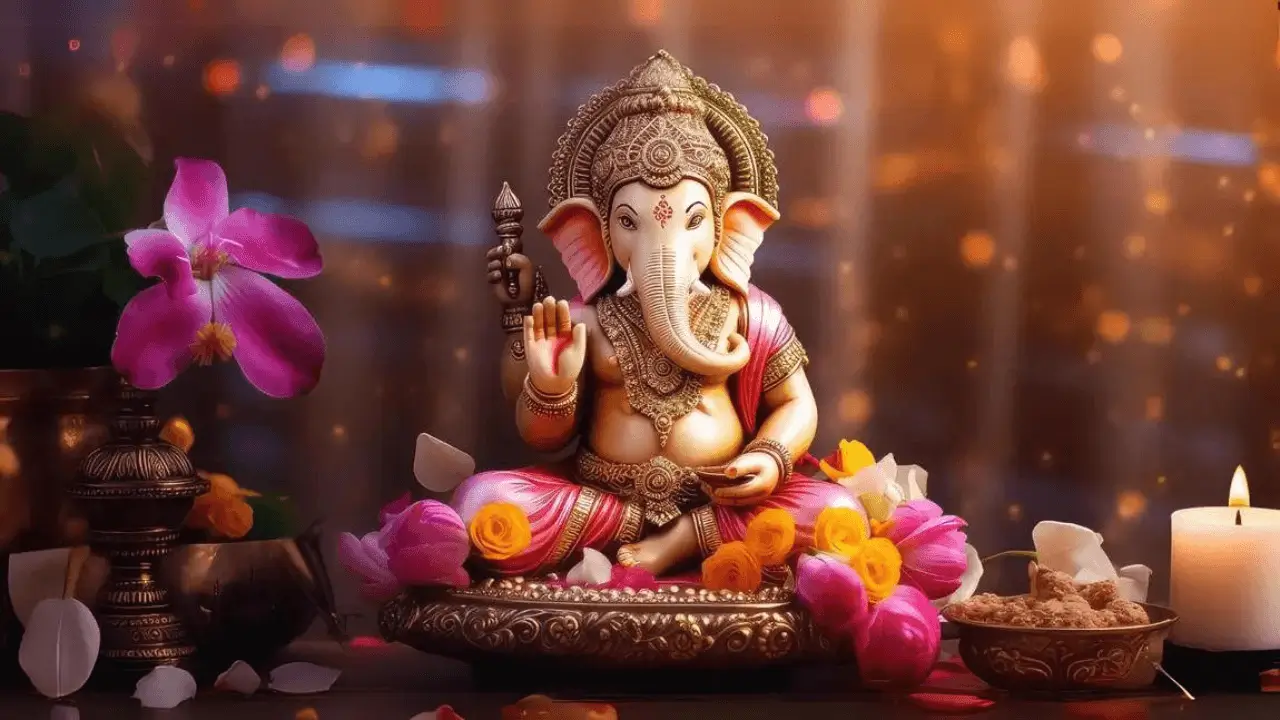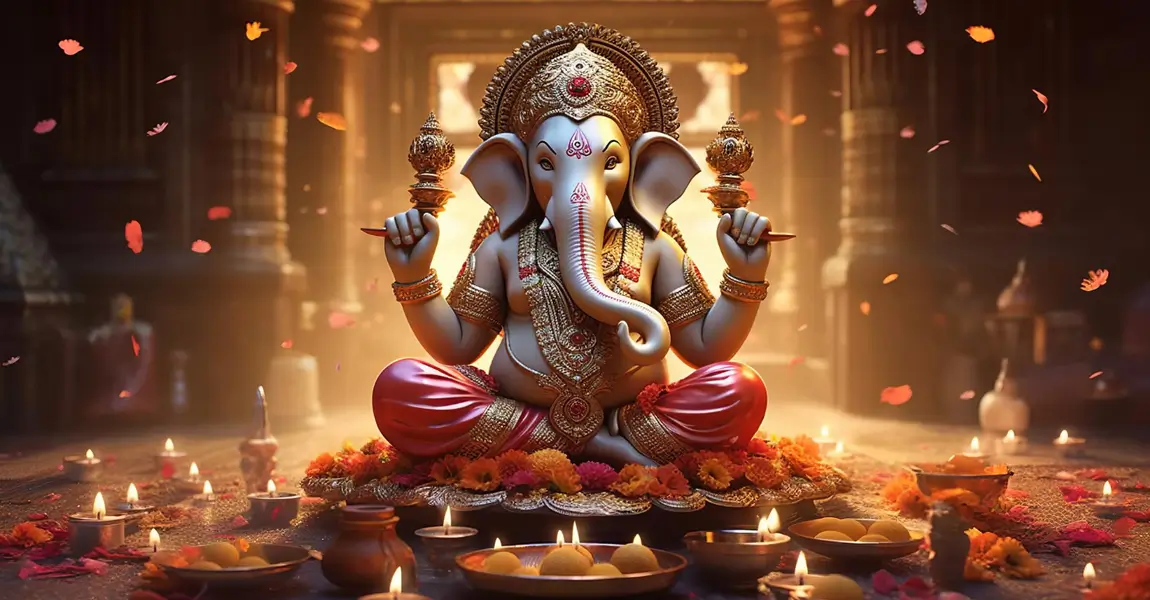Story of Lord Vinayagar

The story of Lord Ganesha, also known as Vinayagar, is deeply rooted in Hindu mythology and is one of the most beloved and widely worshipped deities in Hinduism. Here’s an overview of his story.
Birth of Ganesha: According to Hindu mythology, Ganesha is the son of Lord Shiva, the destroyer, and Goddess Parvati. The story goes that once, while Parvati was bathing, she created a boy out of the turmeric paste she used for her ablutions. She then breathed life into the figure and named him Ganesha. She assigned him the task of guarding the entrance to her chamber and instructed him not to allow anyone to enter.
Encounter with Shiva: When Lord Shiva returned from his meditations and attempted to enter Parvati’s chamber, he was stopped by Ganesha. Not recognizing him as his son, Shiva was furious and engaged in a fierce battle with Ganesha. In the ensuing struggle, Shiva severed Ganesha’s head with his trident, killing him instantly.
Parvati’s Grief and Shiva’s Promise: Upon witnessing the tragic scene, Parvati was filled with grief and anger. In her sorrow, she demanded that Shiva bring Ganesha back to life. To appease her, Shiva promised to revive Ganesha by placing the head of the first living being he encountered onto Ganesha’s body.
The Elephant Head: Shiva then dispatched his ganas, or attendants, to search for the head of a living being. They found an elephant and brought its head to Shiva, who placed it onto Ganesha’s body, bringing him back to life. This is how Ganesha came to be depicted with the head of an elephant and earned the name “Gajanan,” which means “elephant-faced.”
Ganesha’s Attributes: Ganesha is revered as the remover of obstacles and the god of wisdom, intellect, and new beginnings. He is often depicted with a large belly, representing prosperity and abundance, and carries various symbols, including a broken tusk, a noose, a goad, and a modak (sweet dumpling), which symbolize different aspects of his character and abilities.

Worship and Festivals: Ganesha is worshipped by millions of devotees around the world, especially during the festival of Ganesh Chaturthi, which celebrates his birth. During this festival, elaborate idols of Ganesha are installed in homes and public places, and worshippers offer prayers, sweets, and flowers to seek his blessings for success, prosperity, and the removal of obstacles.
The story of Lord Ganesha, with its themes of love, devotion, forgiveness, and resilience, continues to inspire millions of people and serves as a reminder of the power of faith and divine grace in overcoming life’s challenges.
The Ganesh Gayatri Mantra for Pleasing Lord Vinayagar: One of the most commonly chanted mantras to please Lord Vinayagar is the “Ganesh Gayatri Mantra.” This mantra is believed to invoke the blessings of Lord Ganesha and seek his guidance and support in removing obstacles and bestowing wisdom. Here is the Ganesh Gayatri Mantra:
“Om Ekadantaya Vidmahe
Vakratundaya Dhimahi
Tanno Danti Prachodayat”
ॐ एकदन्ताय विद्महे
वक्रतुण्डाय धीमहि
तन्नो दन्तिः प्रचोदयात् ॥
Meaning
- “Om”: The universal sound; represents the essence of the ultimate reality.
- “Ekadantaya”: Refers to Ganesha’s single tusk, symbolizing control over the mind and intellect.
- “Vidmahe”: We meditate upon or worship.
- “Vakratundaya”: Another name for Ganesha, meaning curved trunk.
- “Dhimahi”: We meditate upon or contemplate.
- “Tanno Danti”: May that divine tusked one inspire and illuminate us.
- “Prachodayat”: May he enlighten us and guide us on the right path.
Chanting this mantra with devotion and sincerity is believed to invoke the blessings of Lord Vinayagar and help overcome obstacles, attain wisdom, and achieve success in endeavors. It’s often recommended to chant this mantra 108 times, either individually or as part of a regular prayer or meditation practice, to experience its full benefits.
